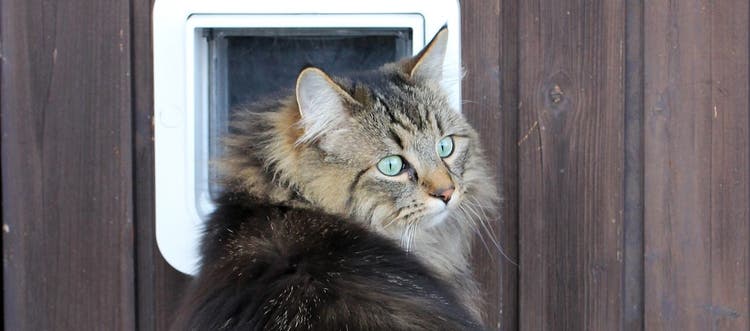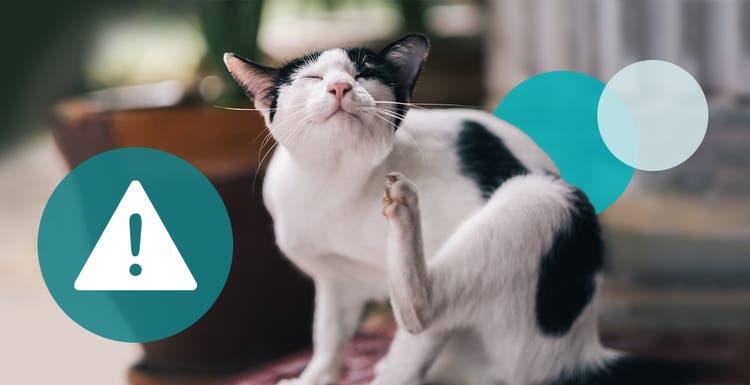The do’s and don'ts of cat training
Everyone knows dogs are typically receptive to training, but what about cats? Training your cat might seem like an impossible feat, but it can be done with the right technique. Let’s go over why you might want to train your cat or kitten, and the do’s and don’ts of cat training.
Benefits of Cat Training
Besides impressing your friends and family, training your cat can curb unwanted behavior if your cat is misbehaving. It also provides much-needed enrichment to their routine and can help prevent boredom. After all, cats are intelligent creatures; their complex cerebral cortex (the part of the brain that processes information) contains about 250 million neurons (for comparison, the human cortex contains billions).1 Maybe most importantly, teaching your cat a few tricks can strengthen their bond with you.
What Can You Train a Cat to Do?
Like their canine counterparts, you can train cats to come, shake, lay down or go on a walk. You might also want to train your cat to avoid certain behaviors, such as meowing through the night or scratching furniture.
Training can be useful for teaching fun tricks or encouraging behavioral changes (such as using a leash or a door flap to go outside). Training might be easier to start with a kitten, but adult cats can still learn new tricks.
Cat Training Don’ts
Don’t Use Fear-based Punishments
A negative physical reaction, like scolding or manually redirecting your cat’s bad behavior, may be a natural response to your cat acting out, but cats don’t respond the same way as dogs. In fact, this reaction might backfire, worsening the problem or confusing your cat. They might interpret any physical response as attention.
For example, if they’re on the kitchen counter or scratching the carpet and you pick them up to relocate them, they might start to realize they can get attention through bad behavior. With verbal responses, you run the risk of them associating your voice with punishment. If you need to use deterrents, try techniques that aren’t related to you, your voice or physical attention. Consider shaking a sheet of aluminum foil to keep them off the countertops, or purchasing a new scratching post to distract them from your couch.
Don’t Overuse Treats
Cats aren’t as motivated by physical rewards (such as a pat on the head), but treats or food can catch their attention. That said, it’s easy to overdo it. To avoid confusion in their association with behavior and rewards, only reserve treats for training purposes. During your training sessions, if your cat loses interest and stops responding, it’s best to stop for the day so they don’t get treats unless they follow through on the desired behavior. Overusing treats can also have adverse effects on their weight, so check with your vet to see what the healthiest options are for positive reinforcement. Their favorite toy or catnip are some nonfood alternatives.
Don’t Avoid the Litterbox
You may have stumbled across rumors on the internet of people toilet training their cats. While it might sound amusing, there are many reasons toilet training shouldn’t be on your list of tricks. Cats are wired to bury their waste, which litterboxes mimic. Your cat could get injured, there’s a higher risk of zoonotic (animal-to-person) infections and it creates complications for any time you need someone else (boarding facilities, vet offices) to care for them. Cats can be trained to use the toilet, but most vets recommend against toilet training for cats.
Cat Training Do’s
Test Different Techniques
Cats respond well to positive reinforcements; there are a few approaches you could use to train them. Combining an auditory cue (such as your voice or a clicker) and a reward immediately when they complete the behavior helps mark the moment and your expectations. The sound helps mark the completed task, so pick a “marker word” that you don’t use in other contexts with them. Here’s an example of what that could look like:
- Grab your cat’s favorite treat, toy or catnip and call them to you.
- As they come toward you, hold the treat above and behind their head.
- Say “sit” as they look up and sit down.
- Click and say your marker word (maybe that’s an easy “yes”) and reward them with a treat right away.
Your cat learns through association, so this routine needs to be consistent and clear to promote positive behavior. Repeat until your cat responds to the marker word without using a treat. Make sure your whole household knows the routine so your cat doesn’t get mixed signals. If something isn’t working, test different rewards, markers or other factors.
Optimize Your Environment
Depending on the behaviors you want to change, you’ll need to make sure your environment is optimized accordingly. If you want your cats to learn tricks, make sure the room is cleared and free of distractions. If you want to litter train your cat or kitten, make sure the litterbox is in a quiet, private space. Timing even makes a difference; before mealtimes, your cats may be more motivated to comply with training that uses food or treats.
Make Gradual Progress
Don’t expect your furry friend to master their new tricks in one day, and don’t expect your cat’s attention to last more than 15 minutes. Take five or 10 minutes to work on one specific command, though you can do this multiple times a day. This advice also applies to behavioral guidance. For example, if you’re working on leash-training your cat, build up their tolerance by letting them sniff and explore their harness, then put it on them and make progress in short time increments. Unlike dogs, cats learn best when they focus on one task at a time. Once a behavior is learned, your cat may have a better chance of retaining the memories. Some studies suggest that cats don’t have as much of an issue with memory decline as dogs.2
Can You Train a Cat Like a Dog?
In many ways, yes! Like training a dog, cats respond well to positive reinforcement, whether that’s through treats, play or praise. But ultimately, cats are different creatures and need a routine tailored to them. Whether it’s just for fun or to curb bad behavior, training cats is possible with consistency, care and lots of patience.
Resources
- “Are Dogs Really Smarter Than Cats?” (April 29, 2021). American Kennel Club.
https://www.akc.org/expert-advice/lifestyle/are-dogs-smarter-than-cats/#:~:text=Not%20Just%20a%20Case%20of,neurons%20in%20the%20human%20brain - “Do Dogs and Cats Have Long-term Memories?” (August 17, 2017). PedMD.
https://www.petmd.com/dog/behavior/do-dogs-and-cats-have-long-term-memories
Related Articles

New Cat or Kitten: Our Downloadable Guide
Thinking about adding a feline to the family? There are so many emotional, social and physical benefits to owning a cat. Check out our free guide, also available to download!








